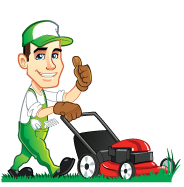Aeration
Aerating is the process of scooping or “coring” holes into your lawn, so oxygen, water, and nutrients can penetrate deeper into the ground.
Why aerating helps lawns
Grassroots need air, water, and nutrients to grow thick, deep, and strong. When soil becomes compacted, even slightly, it inhibits the flow of the essentials that support thicker, healthier turf growth. A layer of compacted soil just 1/4 to 1/2 inches thick can make a significant difference in the health and beauty of your lawn. Aeration creates holes down into the ground to alleviate compaction so air, water, and nutrients can reach grassroots.
Deprived of their essential needs by compacted soil, lawn grasses struggle in stressful situations, such as heat and low rainfall, and lose their healthy, rich color. Grasses gradually thin and eventually die out completely, lacking the oxygen, water, and nutrients available just inches away. Even a single aeration session can open the avenue for these essentials to reach their mark and put your lawn back on an upward trend.
When to aerate your lawn
The best time for aeration is during the growing season when the grass can heal and fill in any open areas after soil plugs are removed.
In Minnesota, the ideal time to aerate the lawn is early fall or early spring. When aeration coincides with active growth, grasses recover quickly and fill areas where aerator equipment exposes soil.
Aerating is most straightforward on your lawn when your soil is moist from irrigation or rainfall the day before. Overly dry soil can be tough to aerate, so moisture eases the process.
Is aerating your lawn worth it?
Yes, aeration improves water, nutrient, and oxygen movement into the ground to help produce a beautiful, healthy lawn.
